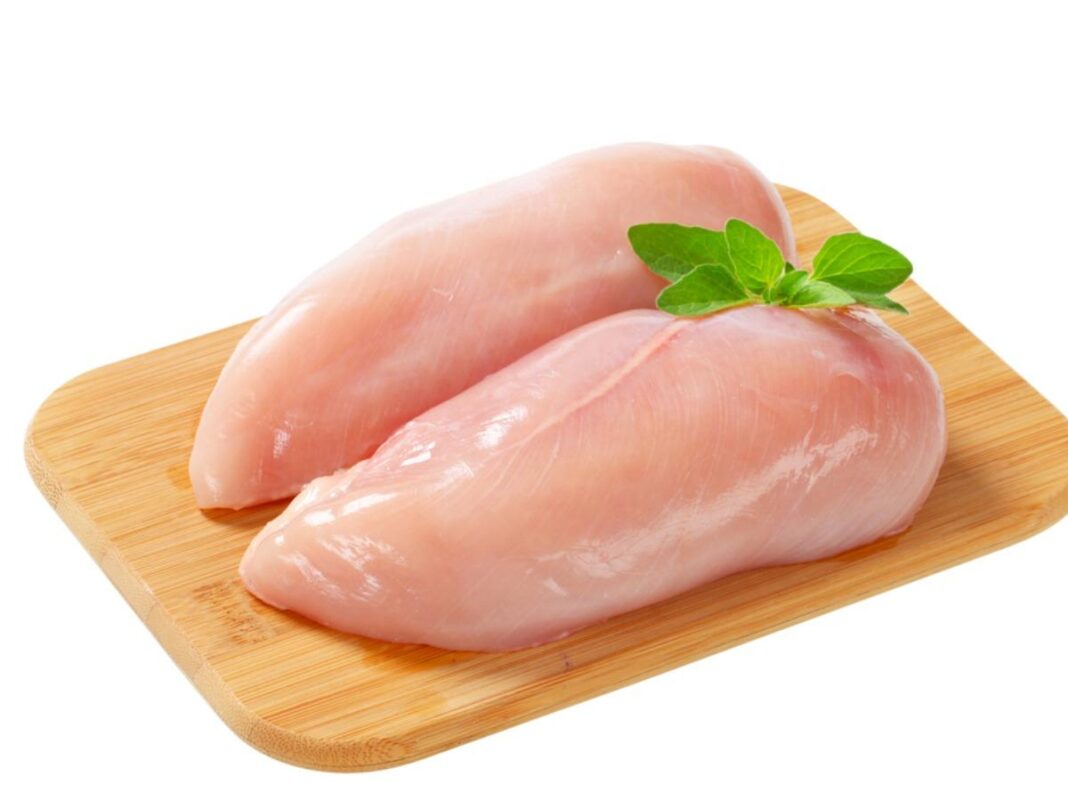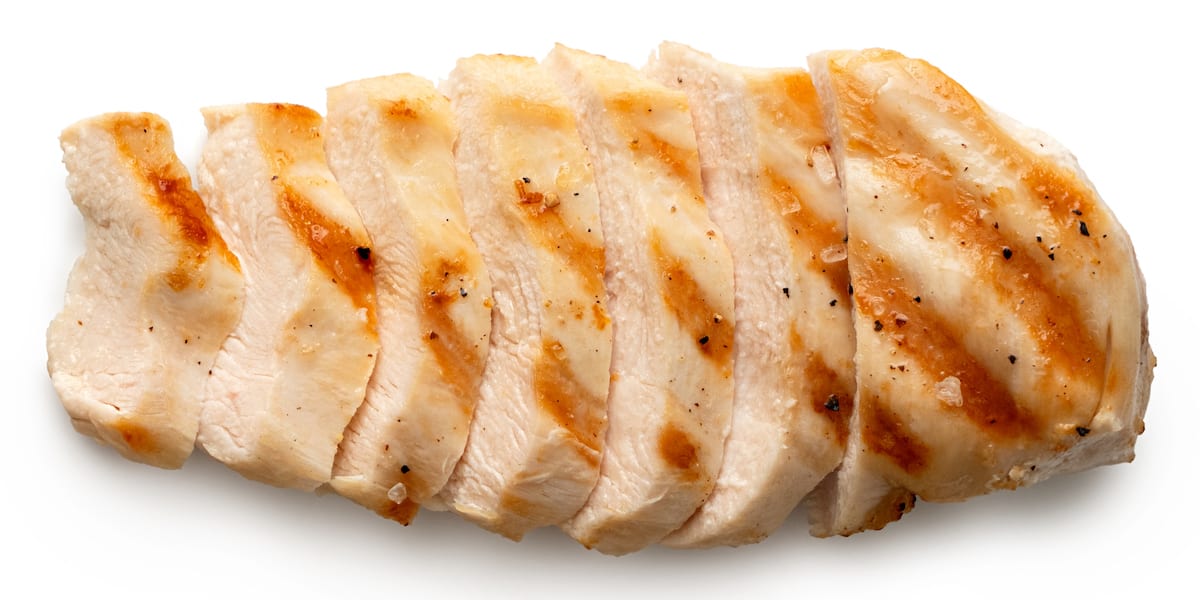Chicken, with its robust texture and mouthwatering flavors, is a beloved dish among many people. Boneless skinless chicken breast nutrition has a number of health benefits. However, did you know that boneless skinless chicken breast nutrition is considered a superfood? “How is that possible?”
For starters, they're high in protein and other essential elements. This article is for you if you've ever wanted to learn more about boneless, skinless chicken breast nutrition.
Table of Contents
Boneless Skinless Chicken Breast Nutrition Level
Chicken is high in lean protein: The best part about this notion is that, unlike red meat, chicken is low in fat and high in the protein your body requires to function.
This means you can eat as much (lean) chicken as you want without fear of gaining weight! However, if you're attempting to reduce weight, many trainers and nutritionists recommend the chicken.
This is due to the fact that you will be consuming calories that are rich in nutrients and proteins rather than fats!
Must Read: 14 Day Keto Diet Plan Free for Beginners
Nutritional Information for 172 Grams of Chicken in a Hurry
A daily serving of 172 grams of boneless chicken provides 284 calories, 53.4 grams of protein, 0 grams of carbohydrates, and only 6.2 grams of fat.
These facts swiftly elevate boneless skinless chicken to the status of a high-powered superfood!
Furthermore, chicken breasts are 100% organic, meaning they don't contain any dangerous chemicals, hormones, or additives.
Only 102 calories, no carbohydrates, and 19 grams of protein are found in only 3 ounces of boneless skinless chicken breast! Isn't that just incredible?
Nutritional Information on Chicken Breasts
Chicken Breast, Boneless and Skinless
Chicken breasts are completely organic, as previously stated. They don't contain any additional ingredients. Because chicken breasts are low in sodium, they are also ideal for anyone with hypertension (high blood pressure) or heart disease.
Sodium is the substance that causes high blood pressure, which can lead to heart disease. In addition, chicken breasts are gluten-free and low in fat, making them ideal for those with severe food allergies.
They are low in sugar, making them an excellent choice for people with diabetes.
It's challenging to keep track of calories when it comes to chicken.
If you buy chicken from the grocery, as most people do, you'll discover that keeping track of your calories is difficult. This is due to the fact that the number of calories used by a chicken breast is precisely proportional to its size.
The more chicken breasts you eat on a regular basis, the more calories you ingest on a daily basis. If you're on a specific diet that requires you to track calories in order to lose weight, this can be a major issue.
Calorie Calculation for Boneless, Skinless Chicken Breast
“How do I count calories when I eat chicken if size dictates the number of calories in a piece of chicken breast, and no two pieces of chicken breast are the same size?”
This is a great topic, and the answer is that you should think about the type of chicken you want to eat and how it's prepared. This can easily increase the number of calories in your chicken breakfast, lunch, or dinner!
The normal calorie count, for example, only applies if you consume one serving of plain boneless, skinless chicken breast (about 3 ounces, or the size of an average adult's hand)! However, as previously said, how you prepare your chicken breast has a significant impact on the total number of calories you consume.
When eating chicken as a meal, how do you account for calories?
Because the average chicken breast (even if it is boneless) is significantly larger than three ounces, you are likely to consume far more than one serving when you buy chicken at the grocery.
Look at the nutritional information for one serving of chicken breast on the packaging and multiply it by the size of the chicken breast. After that, you'll have a fair idea of how many calories you're consuming from your chicken for that meal!
Many people, including yourself, enjoy eating chicken with the skin on it because it is said that this is where the flavour is found. However, despite the fact that they are correct, chicken skin is high in harmful fats.
So, if you eat chicken with the skin on (particularly fried chicken), you're ingesting a lot more calories and fats!
Calorie Content of Skinless Chicken Breasts
Did you know that 366 calories, 55 grams of protein, 0 carbohydrates, 14 grams of fat, 4 grams of saturated fat, and 132 milligrams of sodium are included in a whole chicken breast with the skin on?
- calorie count: 366
- Protein content: 55 g
- 0 grams of carbohydrates
- 14 gram fat content
- Saturated fat (4 grams)
- sodium 132 milligrams
By any standard, they are not the features of a superfood! Also, keep in mind that your body will take the longest to metabolise (burn-off) saturated fats! Rotisserie chicken has somewhat greater nutritional values, but not by much.
This is due to the fact that three ounces of rotisserie chicken have 170 calories, 1 gram of carbohydrate, 11 grams of fat, and 15 grams of protein! You are not eating a superfood if you eat fried chicken with its skin since it is not designed to help you stay healthy and lose weight. Instead, you're eating artery-clogging, weight-gaining comfort food.
This is due to the fact that fried chicken is cooked in oils high in calories, lipids, and saturated fats. Get the nutritional breakdown for one medium-sized fried chicken breast.
This chicken breast contains 364 calories, 34 grams of protein, 13 grams of carbohydrates, 18 grams of fat, and 697 milligrams of sodium. Wow, that's not at all healthy!
Recommended: 20 Home Remedies for Abscess Tooth – Get Quick Relief
109 calories per thigh of chicken
Due to its higher fat content, chicken thighs are somewhat more soft and tasty than chicken breast.
One cooked skinless, boneless chicken thigh (52 grams) has the following ingredients:
- 109 calories
- 13.5 grams of protein
- Carbohydrates: 0 g
- 5.7 grams of fat
209 calories, 26 grams of protein, and 10.9 grams of fat are included in a 3.5-ounce (100-gram) meal of chicken thigh.
As a result, protein accounts for 53% of the calories, while fat accounts for 47%.
Chicken thighs are frequently less expensive than chicken breasts, making them an excellent choice for those on a tight budget.
43 calories per chicken wing
Chicken wings are probably not the first thing that comes to mind when you think about nutritious chicken parts.
However, as long as they aren't breaded or sauced and deep-fried, they can easily be incorporated into a balanced diet.
One skinless, boneless chicken wing (21 grams) has the following ingredients:
- 42.6 calories
- 6.4 grams of protein
- Carbohydrates: 0 g
- 1.7 grams of fat
Chicken wings are 203 calories, 30.5 grams of protein, and 8.1 grams of fat per 3.5 ounces (100 grams).
This means that protein accounts for 64% of the calories, and fat accounts for 36%.
76 calories per chicken drumstick
The thigh and the drumstick are the two components of a chicken leg. The lower section of the leg is known as the drumstick.
A 44-gram skinless, boneless chicken drumstick has the following ingredients:
- 76 calories
- 12.4 grams of protein
- Carbohydrates: 0 g
- 2.5 grams of fat
Chicken drumsticks offer 172 calories, 28.3 grams of protein, and 5.7 grams of fat per 3.5 ounces (100 grams).
When it comes to calorie count, protein accounts for roughly 70% of the total, while fat accounts for 30%.
Other Chicken Cuts
Though the most popular cuts of chicken are the breast, thighs, wings, and drumsticks, there are plenty of others to pick from.
Here are the calorie counts for some more chicken cuts:
- 263 calories per 3.5 ounces of chicken tenders (100 grams)
- 137 calories per 3.5 ounces on the back (100 grams)
- 3.5 ounces of dark meat contains 125 calories (100 grams)
- 114 calories per 3.5 ounces of light meat (100 grams)
Calories are added by the skin of the chicken.
While a skinless chicken breast has 284 calories, 80 percent protein, and 20 percent fat, when the skin is added, the figures drastically change.
One 196-gram boneless, cooked chicken breast with skin contains:
- 386 calories
- 58.4 grams of protein
- 15.2 grams of fat
Protein accounts for 50% of the calories in a chicken breast with skin, whereas fat accounts for 50%. Furthermore, eating the skin adds roughly 100 calories to your diet.
Similarly, one skin-on chicken wing (34 grammes) contains 99 calories, compared to 42 calories in a skinless wing (21 grams). As a result, fat accounts for 60% of the calories in chicken wings with skin, compared to 36% in wings without skin.
If you're trying to lose weight or cut down on fat, eat your chicken without the skin to cut down on calories and fat.
It's Important to Know How to Cook Chicken
When compared to other meats, chicken meat has a low calorie and fat content. However, when you add oil, sauce, batter, and breading, the calories quickly mount up.
A 52-gram skinless, boneless cooked chicken thigh, for example, has 109 calories and 5.7 grams of fat.
The identical chicken thigh fried in batter, on the other hand, contains 144 calories and 8.6 grams of fat. A fried chicken thigh with a flour coating has even more calories and fat: 162 calories and 9.3 grams.
A 21-gram boneless, skinless chicken wing contains 43 calories and 1.7 grams of fat.
A chicken wing slathered in barbecue sauce, on the other hand, contains 61 calories and 3.7 grammes of fat. A wing cooked in a flour coating has 61 calories and 4.2 grammes of fat, which is equivalent.
As a result, low-fat cooking methods, including poaching, roasting, grilling, and steaming, are your best bet for reducing calorie intake.
How Boneless, Skinless Chicken Can Assist You In Maintaining Your Health
As previously said, this sort of chicken has a low-calorie count, is low in fat, and is low in sodium.
It's also high in low-fat protein, which helps you develop muscle and burn fat rapidly and easily.
Selenium, phosphorus, vitamin B6, and niacin are all found in boneless, skinless chicken.
All of these things are necessary for your body to function properly. As a result, these elements help you stay healthier for longer!
Recipes for Healthy Chicken Meals
“If the manner I prepare my chicken has a significant impact on the amount of sodium and fats it contains, as well as the number of calories it contains, how can I cook my chicken in a way that is good for me?” As you read this essay, you may be asking yourself this question. The following is the answer.
Cook the chicken at a temperature that is adequate for its size. Salmonella and other bacteria found in undercooked or raw chicken can make you very sick or even kill you!
Also, even if it is boneless and skinless, try to avoid frozen chicken as much as possible. In order to preserve this type of chicken, manufacturers tend to add a lot more sodium to it. Keep in mind that salt is an excellent preservative, so prepackaged boneless, skinless chicken will be high in it.
This is hazardous to your health!
Cook boneless, skinless chicken breasts until they reach an internal temperature of 170°F.
This will allow the chicken to cook properly while also killing any bacteria or diseases that may be present.
Once you've cooked the chicken, keep it frozen. Your freezer's extreme cold will keep it ready to consume for a more extended period of time.
Cooking Chicken in a Healthy Way
If you've ever eaten boneless skinless chicken breast nutrition, you'll quickly realise that it lacks flavour and texture, even when cooked. So it could be a turnoff for you if you enjoy eating nice dishes with a variety of flavours and a good feeling.
Don't worry, you can cook chicken in a healthy way while still giving it flavour, taste, and texture! You can cook your chicken in a variety of ways, including roasting, broiling, and boiling. This will keep the original flavour, taste, and texture of the chicken while reducing the amount of calories consumed.
Cooked chicken can also be dressed with herbs and low-fat or non-fat condiments to make it more appetising. However, chicken should not be sautéed or fried. You'll wind up cooking the chicken in fattening butter and fats, increasing the calorie and fat content of the dish.
This isn't what you're looking for! Dressings such as barbecue sauce, olive oil (or any other type of oil for that matter), and dipping sauces such as honey mustard or ranch should be avoided. These are high in fat and calories, and will add inches to your waistline!
So there you have it.
So, now that you know how healthy boneless, skinless chicken is, eat it all the time! You'll be happy you did! I hope you like the article “nutrition of boneless skinless chicken breast.” Then, share this with your friends and family.




